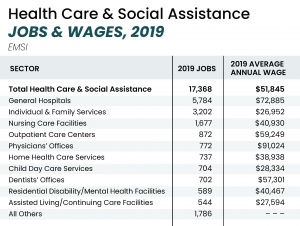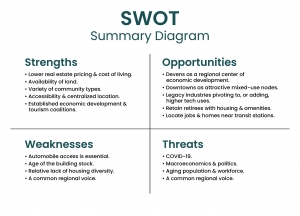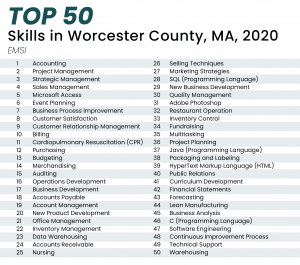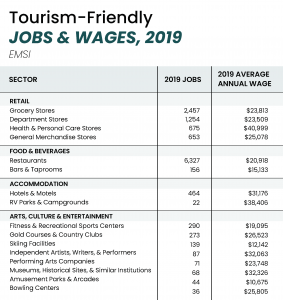One North Central: A Roadmap for Regional Prosperity
New regional economic development plan sets a path forward for growth, opportunities in North Central Massachusetts.
In the 1990s, the North Central Massachusetts Chamber of Commerce led a major community and business-based planning effort that resulted in a bold strategy to advance the economy of the
region into the future. The regional plan, which led to the implementation of several economic development programs across the region, resulted in great success.
Following implementation of the plan, the region continues to benefit from a strong economic impact of tourist dollars and manufacturing jobs, while also supporting existing businesses with 
In the past 25 years since the previous plan was developed, North Central Massachusetts has certainly changed! Our region now offers opportunities where one can open a small business in an old mill, build furniture in a state-of-the-art manufacturing facility, learn to design a video game in a tech lab, or even visit a farm or orchard for fresh produce. We’ve seen the region’s 26 cities and towns and the former Fort Devens experience their own economic challenges and opportunities. But these communities have also come out of these scenarios stronger than before due to the combined strength of our region where the whole is greater than the sum of its parts.
In early 2020, the Chamber and its affiliate organizations hired RKG Associates, a national economic development consulting firm, to help us develop a new Regional Economic Development Plan and learn how the region should position itself over the next ten to fifteen years. With the collaboration of regional business and community leaders, dignitaries, the boards of directors at the Chamber, the North Central Massachusetts Development Corporation and Visit North Central Massachusetts, three steps were identified as the region looks toward success through the year 2035: defining goals, assessing and defining market opportunities, and identifying recommendations and actions to advance economic development. By utilizing data and stakeholder input, the new Regional Economic Development Plan revealed several strengths and opportunities for which the region can compete for businesses, employees and residents. It also identified weaknesses and threats for the region to acknowledge and respond to effectively in the months and years ahead.
“A central tenant of this plan is growing our region from within,” said Roy M. Nascimento, President & CEO, North Central Massachusetts Chamber of Commerce. “The goals and recommendations included in the plan are structured to help the region come together and provide opportunities for each city and town across our region to succeed.”

North Central Massachusetts was compared to five other regions both within Massachusetts and other states, including Greenville County in South Carolina and the Lehigh Valley Region in Pennsylvania. The five comparison regions are comprised of those inside Massachusetts that are seen as peers or have a composition the region may want to strive for. The two regions outside Massachusetts (Greenville and Lehigh Valley) were chosen because of their robust manufacturing and transportation/logistics sectors and both are experiencing significant job growth compared to national averages.
“By utilizing a benchmarking exercise, we were able to understand the strengths and opportunities North Central Massachusetts has compared to other regions,” added Nascimento. “This also gives us a portrait of how the region may look to improve its competitive position over time.”
When the team began working on the plan, the economy of Massachusetts and the United States was experiencing a long period of economic growth with very low unemployment rates and positive growth emanating toward North Central Massachusetts from the Greater Boston region. Those positive growth trends were quickly diminished in March 2020 with the rapid spread of COVID-19 and the ensuing shutdown of the national economy.
“The pandemic has shifted the context of economic development across the entire ecosystem,” added Nascimento. “While it is difficult to predict the short- and long-term systemic impacts and changes presented by the pandemic, the goals developed for the plan were structured to address current and near-term needs through the economic recovery, as well as looking past the recovery to a future where the region prioritizes strategic yet organic growth that is cultivated from within.”
One of the more pressing challenges for the region’s employers is attracting and retaining younger workers who are interested in the region’s most concentrated areas of employment in health 
“Looking ahead, we need to focus on strengthening and growing the advanced manufacturing, logistics, distribution and health care industries, with an emphasis on continuing to develop the skills of our younger workers,” said Barbara Mahoney, President & CEO of Leominster Credit Union who also serves as Chair of the North Central Massachusetts Workforce Investment Board and as a member of the Chamber’s Economic Development Taskforce that helped develop the plan “We know by building the skills of today’s workforce to accommodate tomorrow’s technology we can remain a competitive and attractive region for employers and employees alike.”
As for the region’s demographics, post-retirement residents make up an increasing share of the region’s population, with a modest increase expected in the next ten years. “With an aging population, the region is likely to experience an increase in health care utilization,” said Winfield Brown, President & CEO of Heywood Hospital and another member of the Economic Development Taskforce “The need for additional healthcare and social services is likely to thrive and will serve as one of the key industry sectors for growth over the next ten years.”
The region’s large geography means that while some communities function within the economy of larger anchor cities like Boston or Worcester, others rely more heavily upon North Central Massachusetts markets like Fitchburg and Leominster. What’s interesting is that more workers who live in the northern and western parts of the region tend to commute to other North Central Massachusetts communities and not out of the region.
“As the region begins to heal from the pandemic, we believe our opportunities for tourism in North Central Massachusetts will serve the region well as individuals and families may find easily drivable amenities, food and farm attractions, and arts and culture venues here in the region as an appealing and affordable option rather than traveling by air or to destinations in the U.S. and around the world,” said Henry Tessman, General Manager of Great Wolf Lodge and a member of the Taskforce “Given the effects of the pandemic on the restaurant and retail industry in the near term, there is uncertainty around the demand for future skilled workers; however, this could also present an opportunity to support growth in local businesses if skilled workers are looking at the region as a place to open their own business and hire locally.”

“The current, demanding real estate market in North Central Massachusetts is a true testament of the draw this region is for individuals and families who want the convenient access to amenities with a more affordable cost of living,” said Matthew Fournier, Owner of Elite Construction & Design and a member of the Taskforce “What used to be a weekend destination for apple picking or leaf peeping is now a place where we call previous visitors our neighbors.”
While the Regional Economic Development Plan shows the strengths, opportunities, threats and weaknesses of NCM, it does not portray what we who live and work in North Central Massachusetts have known all along: that our home here is where the heart is.
To view the Regional Economic Development Plan in its entirety, click here.


